Monday, April 5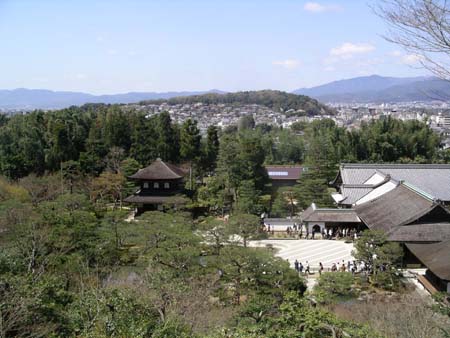
Paula: To our delight, we woke up this morning to blue sky - perfect for our day to explore the temples and streets of Kyoto (and quite a change from our day yesterday in Nara…). We met our guide Ian, a Canadian who has lived in Kyoto now for 17 years. Ian the editor of a Kyoto Visitors Magazine, and also occasionally provides private guiding services for visitors. The agenda for today was to explore Kyoto's east side, known for its beautiful temples and shrines.
 Ian
helped us discover the beauty Kyoto's temples by visiting a few of the lesser-known
sites in addition to those on the "must see list." Many of these
temples were built in the 8th century and are over 1,200 years old. We learned
about the importance Japanese place on th
Ian
helped us discover the beauty Kyoto's temples by visiting a few of the lesser-known
sites in addition to those on the "must see list." Many of these
temples were built in the 8th century and are over 1,200 years old. We learned
about the importance Japanese place on th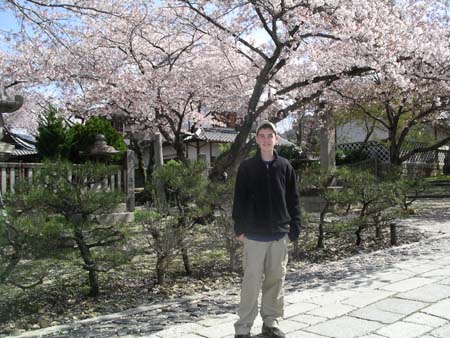 eir
ancestors and the rituals that take place each year to welcome ancestors back
to their home temples and then ensure they return again to the afterlife.
We even found a small shrine dedicated to the "Year of the Rat"
- it represents 1960 which is the year that both Steve and I were both born.
eir
ancestors and the rituals that take place each year to welcome ancestors back
to their home temples and then ensure they return again to the afterlife.
We even found a small shrine dedicated to the "Year of the Rat"
- it represents 1960 which is the year that both Steve and I were both born.
 We
learned about the Japanese branches of Buddhism as well as Shintoism which
originated here in Japan. As we learned yesterday, most Japanese today incorporate
both religions as well as some Christianity into their rituals for significant
life events. Ian explained that after a child's birth it is important to go
to the Shinto Shrine
We
learned about the Japanese branches of Buddhism as well as Shintoism which
originated here in Japan. As we learned yesterday, most Japanese today incorporate
both religions as well as some Christianity into their rituals for significant
life events. Ian explained that after a child's birth it is important to go
to the Shinto Shrine 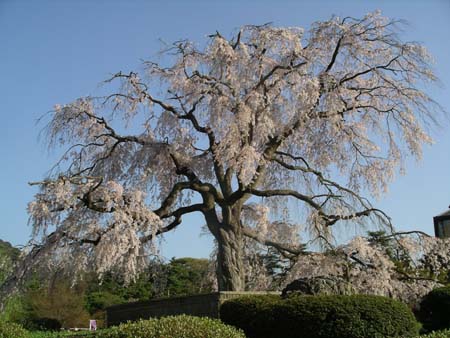 but
upon death, the services are conducted at the Buddhist Temple. Marriages often
combine traditional Japanese customs with elements of Christianity. Superstitions
also are very prominent here and at each of the temples we found people purchasing
fortunes and many varieties of charms for all types of good luck.
but
upon death, the services are conducted at the Buddhist Temple. Marriages often
combine traditional Japanese customs with elements of Christianity. Superstitions
also are very prominent here and at each of the temples we found people purchasing
fortunes and many varieties of charms for all types of good luck.
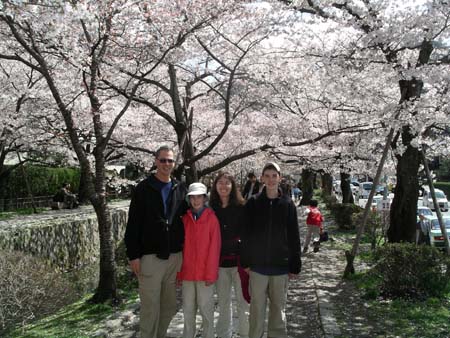 Some
of the temples were originally the compounds of the shoguns that ruled Japan
for a good portion of their history. Our visits here provided an opportunity
to see traditional
Some
of the temples were originally the compounds of the shoguns that ruled Japan
for a good portion of their history. Our visits here provided an opportunity
to see traditional 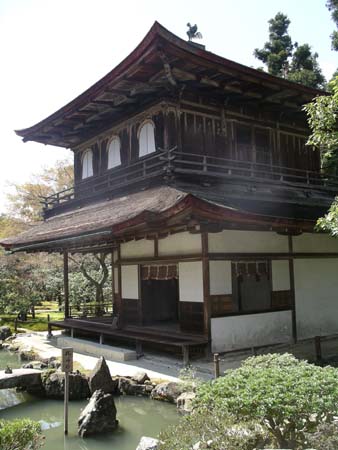 Japanese
architecture and gardens. The gardens included delicately pruned scrubs and
trees as well as ponds and sculptured sand and gravel. Even David was struck
by the beauty created in these peaceful landscapes and said, "could you
do something like this Mom?"
Japanese
architecture and gardens. The gardens included delicately pruned scrubs and
trees as well as ponds and sculptured sand and gravel. Even David was struck
by the beauty created in these peaceful landscapes and said, "could you
do something like this Mom?"
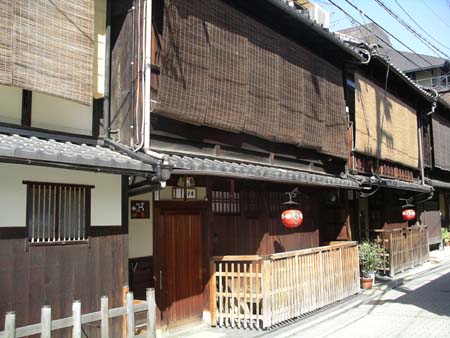 Our
walk today also took us through many old neighborhoods and a local market.
The simple beauty of the traditional homes made of all natural materials was
particularly striking when compared with some of the modern construction going
up in other areas of the city. The beauty of these old temples, shrines and
neighborhoods is
Our
walk today also took us through many old neighborhoods and a local market.
The simple beauty of the traditional homes made of all natural materials was
particularly striking when compared with some of the modern construction going
up in other areas of the city. The beauty of these old temples, shrines and
neighborhoods is 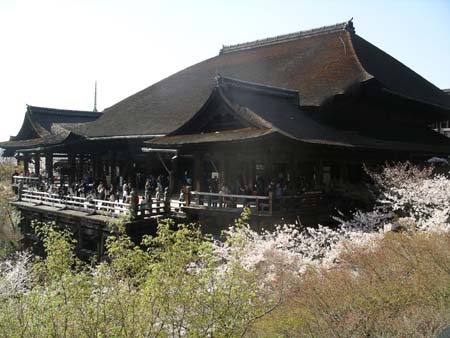 certainly
augmented by the cherry blossoms and it is clear why so many Japanese flock
here in the springtime.
certainly
augmented by the cherry blossoms and it is clear why so many Japanese flock
here in the springtime.
The temples that we visited today included Kurodani, Shinnyo-do, Ginkaku-ji,
Kiyomizu, Nanzen-ji, Kodai-ji, and Chion-in. Each one has its unique beauty
and history, and several are set among beautiful gardens (and of course cherry
blossoms). Some of these temples are  very
crowded with tourists because of the cherry blossom season, but we also enjoyed
the quiet of temples that are relatively unknown and not frequented by visitors
(such as the Kurodani temple). We also enjoyed walking on the "Path of
Philosophy", so named because of a professor from nearby Kyoto University
who in the 1930's
very
crowded with tourists because of the cherry blossom season, but we also enjoyed
the quiet of temples that are relatively unknown and not frequented by visitors
(such as the Kurodani temple). We also enjoyed walking on the "Path of
Philosophy", so named because of a professor from nearby Kyoto University
who in the 1930's 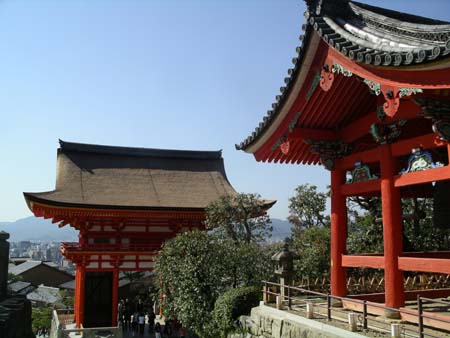 would
take walks here each day at lunch (obviously, he taught philosophy). The path
is crowded with tourists who flock here to see the cherry blossoms, but this
didn't detract too much from its beauty today.
would
take walks here each day at lunch (obviously, he taught philosophy). The path
is crowded with tourists who flock here to see the cherry blossoms, but this
didn't detract too much from its beauty today.
Tomorrow we will explore the west side of Kyoto with an American guide who also writes for Lonely Planet. We hope to see another market, do some shopping and of course see additional temples.
